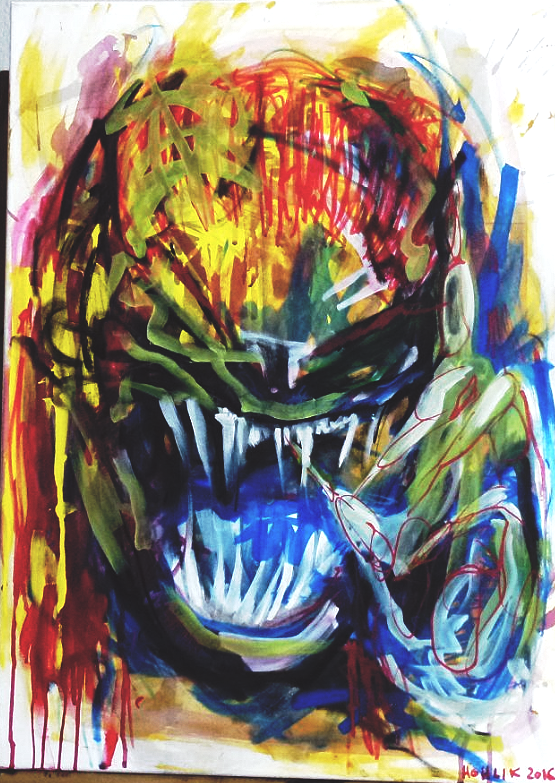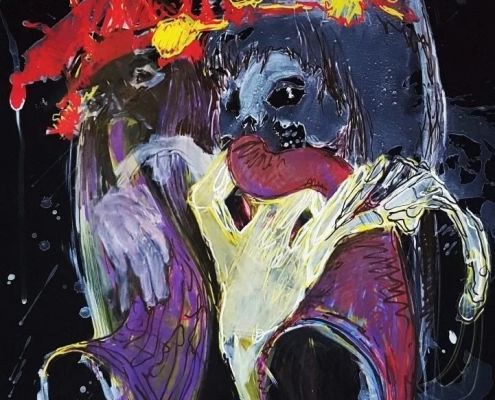Strzyga
Strzyga painting captures the duality of the Polish vampire demon through visceral expressionism.
Specifically, this series explores the Strzyga—Poland’s most feared vampire creature born with two hearts, two souls, and two rows of teeth. Furthermore, these works bring to life the shape-shifting terror described in Polish folklore: a being trapped between life and death, transforming from corpse to owl-like predator who hunts those who wronged her in life.
Working in layered acrylic on canvas, these strzyga painting works embody the demon’s fractured existence. Additionally, the creature shifts between human form and bird-like monster, hunting at night from graveyards and crossroads. Moreover, Strzyga legends remained powerful in rural Poland well into the 20th century, representing the terror of the “unclean dead”—those who died too young, too violently, or with bodies bearing unnatural marks.
The paintings channel that liminal horror: one soul departed, one soul rotting inside a corpse that refuses to stay buried. Similarly, like the folklore itself—where the Strzyga remembers her human life and seeks revenge—these canvases work through vengeance and memory, building meaning through archaeological layers of paint.
Category: Vampire Demon – THE DOUBLE-SOULED
Strzyga Vampire Characteristics in Polish Folklore
Primarily, people born with two sets of teeth, two hearts, or no armpit hair were believed to become Strzyga after death. Consequently, these individuals lived as outcasts in Slavic communities, driven from villages due to physical anomalies. Interestingly, strzyga demon painting traditions show the moment of transformation—when one soul departs to the afterlife while the second remains trapped in the decomposing body.
The vampire also transforms into barn owls at night to hunt. During these hunts, Strzyga targets those who mocked or hurt her during human life, sucking blood before devouring internal organs. Additionally, victims included night travelers and anyone wandering near cemeteries or crossroads. Finally, protection methods included decapitation, burying the body face-down with a sickle, or hammering stakes through various body parts—similar to defenses against other Slavic vampires like Zmora.
Themes in Strzyga Vampire Art
First, this strzyga painting series explores the horror of dual existence—being neither fully alive nor completely dead. Second, Strzyga represents society’s treatment of those born different in folklore art traditions, showing how fear of physical anomalies created literal monsters. The demon embodies tragic vengeance: the outcast returns after death to punish those who cast her out.
Ultimately, these paintings capture the terror of fractured identity. When one heart stops beating but the other continues, when one soul escapes but the other remains screaming inside rotting flesh. This theme of split consciousness connects to the possession explored in the Bies series—both representing the loss of unified self.


 hohlik
hohlik hohlik
hohlik hohlik
hohlik